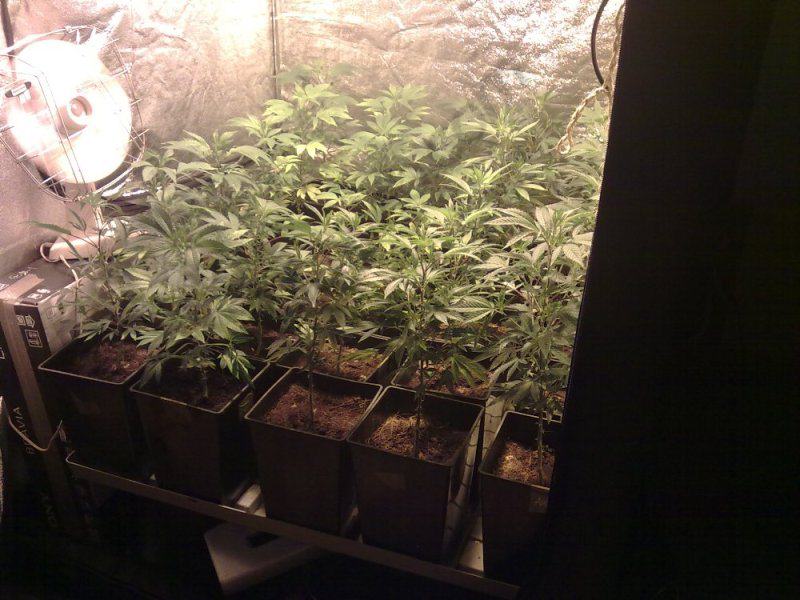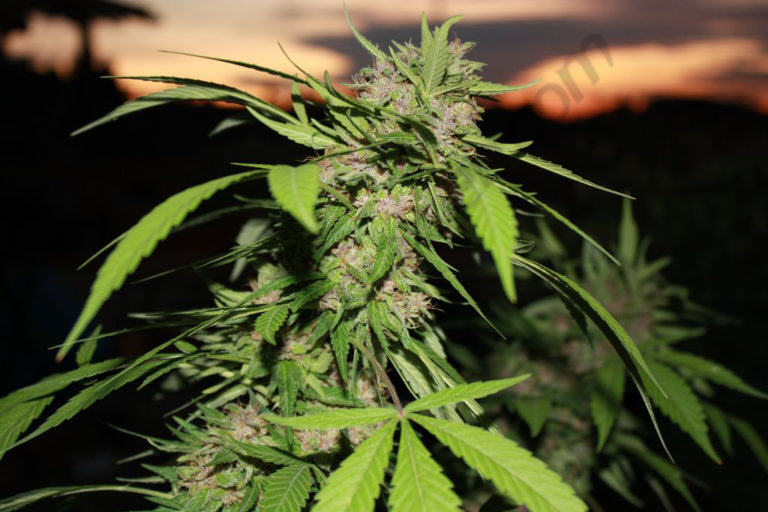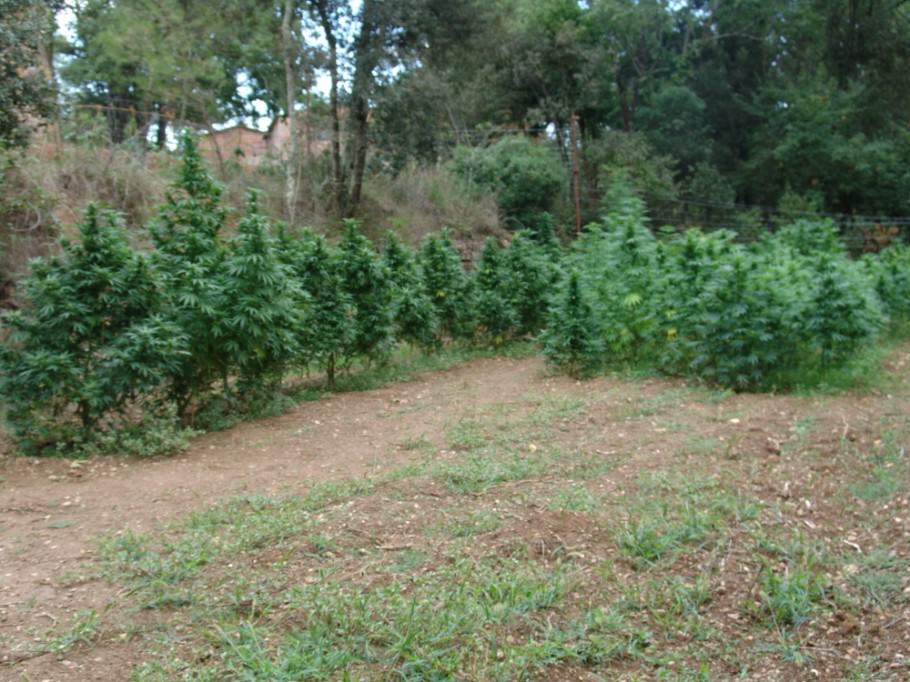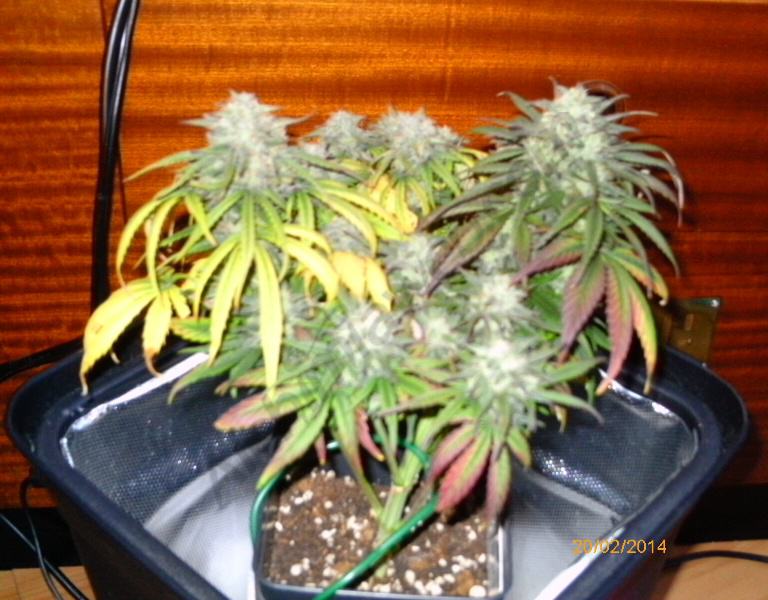Guerrilla growing cannabis
List of contents
Growing cannabis outdoors, guerrilla style
Guerrilla cultivation is often the only available option for many growers to keep themselves supplied with cannabis throughout the year, especially for those who have no garden for outdoor growing and don't have the possibility of cultivating indoors. The idea is simple, it's a question of finding a suitable piece of land to grow on, in a forest, woods, or scrubland where plants can be left to fend for themselves until harvest time. Naturally, the plants need not be completely abandoned, they can receive some care and maintenance depending on how accessible the grow spot is, and how much the grower wishes to risk being caught red-handed while attending to them.
Although the success of the crop will depend largely on luck, with the plants being more or less left to their own devices for most of their life, a series of steps can be taken that, while not guaranteeing a successful harvest, can certainly help the plants to remain healthy throughout the season. In this way, guerrilla growers can harvest cannabis crops of a quality rivalling that of the most pampered outdoor gardens, where it's far easier to provide the plants with all they need.In the following article we will outline the most important elements to consider for achieving a successful guerrilla harvest in the safest and easiest way possible.
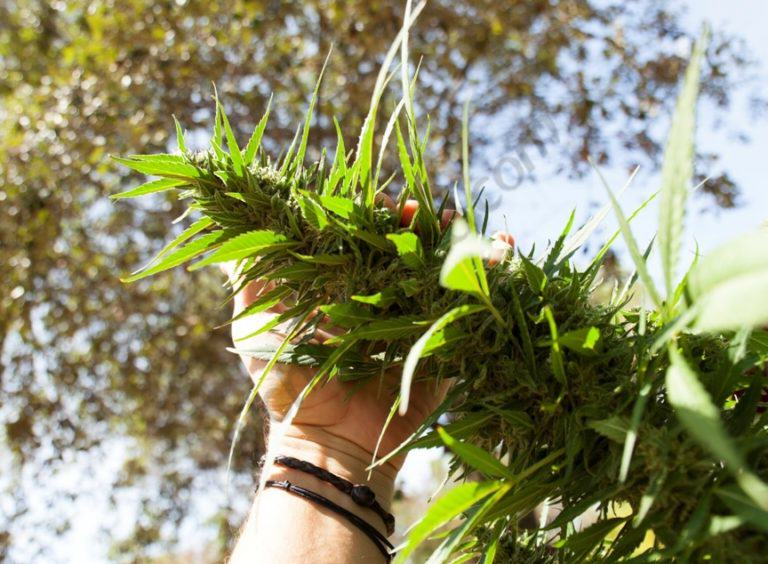
Cannabis varieties for guerrilla growing
Choosing the right variety for a guerilla grow is crucial. The first thing is to choose a variety with a relatively short flowering period; The shorter the flowering, the less time the plant needs looking after, which benefits us for two reasons: firstly, the less time the plants are in the ground, the less opportunity there is for problems to arise from pests and diseases, and secondly, the sooner the plants are ready and harvested, the sooner both the grower and the crop are safe. To avoid wasting time, space and energy growing male plants, it's important to choose clones or feminised seeds.Care should also be taken to select varieties known to be resistant to mould and pests.
As we're not going to be able to provide them with regular insecticide and fungicide treatments as we might with plants in our private garden, guerrilla plants will need to be hardy, with natural resistance to ensure we harvest clean, mould-free weed, undamaged by pests. Due to the elevated risks carried by guerrilla growing, cultivators will normally choose to plant highly productive varieties, not wanting to take risks and waste effort on plants that will only produce a few small buds. Another factor to consider when choosing genetics is the height of the plant, it being preferable to avoid tall-growing varieties that could easily betray the location of your grow spot.
Many guerrilla growers opt for autoflowering seeds, an excellent choice for this style of cultivation. These are plants that stay small in size, and thanks to their ability to flower independently of the natural photoperiod, if they're sown at the high time they can be harvested well before normal (photoperiod-dependent) plants, beating the rippers (plant thieves), Police or curious hunters in their search for guerrilla grows. And depending on the climate, it's possible to plan two or even three outdoor crops per year thanks to both autoflowering seeds and the use of clones, as we've seen in our article dealing with off-season outdoor cultivation.
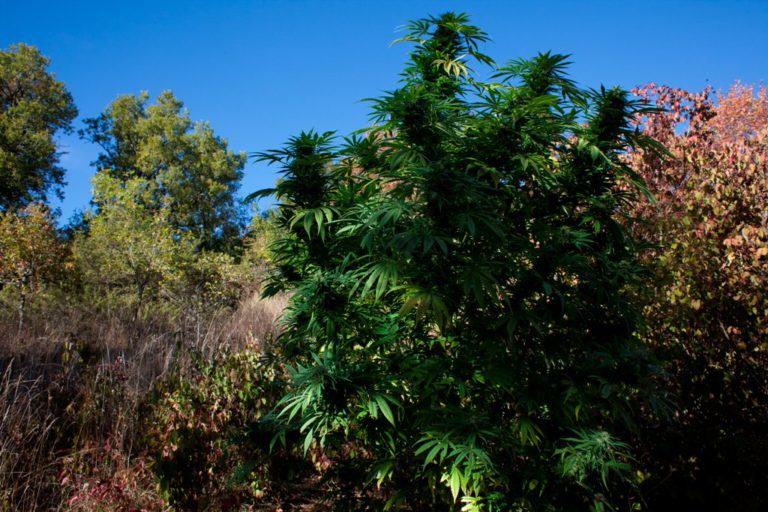
Whichever type of seed or clone is chosen, it's advisable to give them a small period of growth at home and take them to the selected guerrilla spot when they've got a little bigger. Young seedlings and newly-rooted cuttings are highly susceptible and will be at risk both from adverse weather conditions and insects or predators, so transplanting them when they are a few days older will greatly increase the chances of them reaching maturity.
Choosing and preparing the growing spot
This is undoubtably a fundamental aspect, there's no point in choosing the perfect variety if we're not going to plant it in an optimal place for its development. We must follow the same principles as in any outdoor crop in terms of altitude, orientation and solar exposure (try not to exceed 700-800 metres in altitude, situate the plants facing the south or east and in the spot with the most hours of direct sunlight), but also other factors such as water, wind or wild animals, which can cause significant complications. Placing the plants so they receive direct sunlight first thing in the morning will quickly evaporate any rain or dew left from the night before and dry the buds, greatly helping in the battle against fungi like botrytis or powdery mildew.
Ideally, we'd find a grow spot near to some kind of water source, so if we visit the plants, we can give irrigate them at the same time, without having to transport the water too far (and besides, being seen carrying water to some remote rural spot is liable to arouse suspicion). Some growers place their plantation nearby to riverbeds or streams, allowing plants to absorb water from the soil as they need it, although the rains of late summer - sometimes torrential in our Mediterranean climate - can swell watercourses and devastate plantations around harvest time.
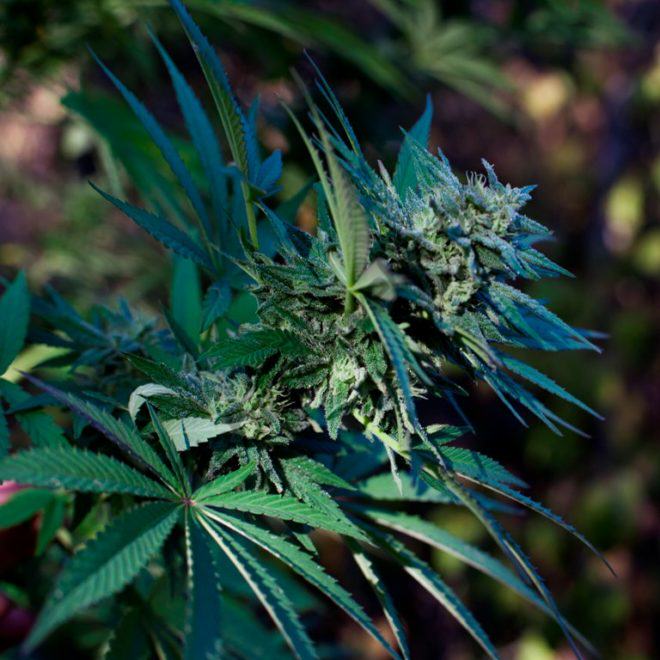
There are several tricks that allow us to to irrigate less frequently, for example using polymers mixed into the substrate, which work by absorbing water when irrigated, which they later release as the substrate dries. Mulching is another method often used, a thick covering of straw or plants such as bracken that is deposited as a layer on the soil, inhibiting evaporation from the soil. If the native soil in the chosen area is not of a quality suitable for growing cannabis, ideally dig a hole and fill it with a good growing medium, to which a little coco fibre or peat may be added (if the substrate doesn't already include it), along with polymers and slow-release solid fertiliser, which we will discuss below. Some growers bury a perforated plastic sheet in the growing soil about 4-5cm from the surface, which allows water to seep through, but largely prevents its subsequent evaporation.
We can currently find a good number of slow-release solid fertilisers on the market, products perfectly suited to this type of cultivation. Guerrilla Tabs work really well, as does the GK Organics range from Guanokalong, Trabe's Nutrihemp or Terralba solid fertilisers. You can make an initial mix when planting, formuated towards the vegetative growth of the plant, and then add more fertiliser when the flowering phase begins. Another option is to use a sack of soil as a grow-bag. This is easily done by clearing the vegetation from a small area of earth, placing a bag of planting soil on the ground, e.g. All Mix by Biobizz. A simple slit in the form of a cross on the top of the bag provides the hole in which the seedling or clone is planted. The method gives a good amount of quality growing media for the plant to develop its root system and feed. The bag can also be perforated on the lower side, allowing the roots to also penetrate the native soil below. Once ready, the substrate bag is covered with soil or vegetation to keep it hidden from view.
Another aspect to think about when choosing the growing area is to make sure it's a good distance away from any homes, roads or paths, at least far enough to avoid problems from the intense smell that your plants will give off during flowering. In the forest there are often small paths used by animals to move between vegetation, and it's important to avoid them when planting if we don't want wild animals eating or simply trampling our plants. Choosing a sheltered spot protected from strong winds which, as well as breaking branches and damaging plants, can easily carry the smell of weed further than we'd like, will also help our crop to stay undiscovered.
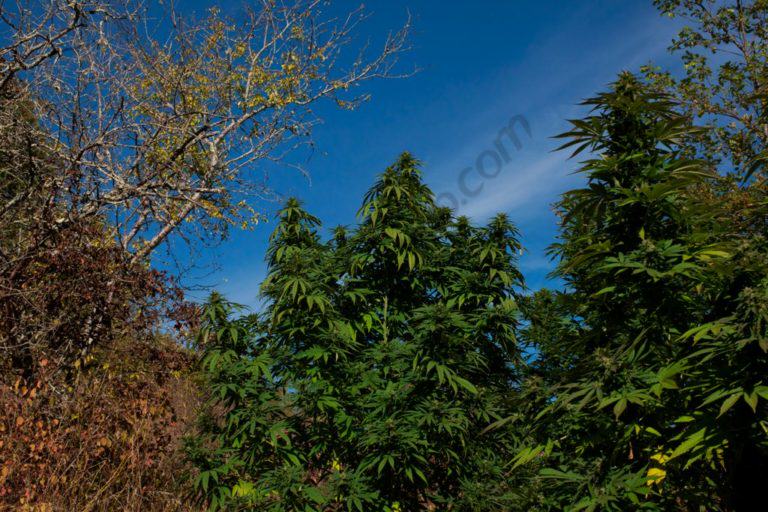
Last but not least, a very important consideration is camouflaging the growing area. Once the plants are in their final location, we can make use of the surrounding vegetation to hide our plants, constructing a kind of rudimentary fence with them so that the only access to our crop is by moving the vegetation to one side. In addition to preventing the visibility of our plants, this system will help to stop wild animals from accessing our crop. In our article How to hide your marijuana crop you'll find more ideas to help you ensure your plants remain undiscovered. Some growers keep wild animals away from their guerrilla spot by spraying the area with one of the many animal repellents on the market (human urine works quite well too!) to prevent them from getting too near to the plants.
Experienced growers often spread their plants around in several different growing spots within a relatively small area, enabling them to visit them all on the same day without having to travel too far. It's also a safeguard against failure, should any of various spots be found out or suffer damage for some reason, the others spots will, with luck, remain undiscovered and intact to ensure a harvest of some kind. The most dedicated guerrilla growers install static wildlife monitoring cameras of the kind used by hunters to monitor the plants and ensure that they are in optimum condition.
Cannabis guerrilla growing
As we've already mentioned, one of the main factors for success in a guerrilla crop is how long it lasts, which, to reduce exposure to pests, diseases and risk of discovery, should be as short as possible. We can use automatic seeds, germinated at home and transplanted into the wild when they are a little bigger. The same can be done with cuttings taken from mother plants, which we must take out from June onwards. If normal feminised seeds are used, they can be germinated at home and transplanted to the guerrilla crop when they are about 25 cm high and less likely to be devastated by attacks from small insects, slugs, etc.
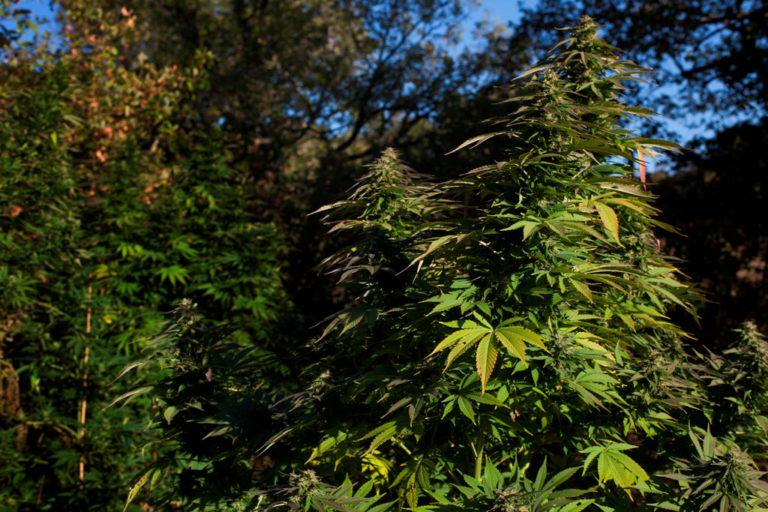
It's highly advisable to water the plants well every time you visit them (don't go if it has rained recently, take advantage and visit after a few dry days), and while you're there check the area for any sign that your plants have been discovered, add some fertiliser if necessary and apply some kind of broad spectrum preventive against insects and mould, such as Trabe's potassium soap Oleatbio or Urtifer, a nettle flour by the same brand. If necessary, and we see that the plants are growing too high, they can be bent or their tips pruned to keep things discreet.In short, as long as the plants are healthy, without nutrient deficiencies or pests of any kind, we can't do much more than keep them watered and cross our fingers for a problem-free grow and a successful harvest. We should never forget that this method of cultivation involves a series of legal risks that undoubtedly need to be studied properly.
Happy growing!































































